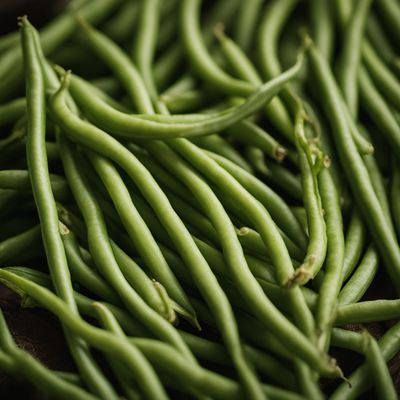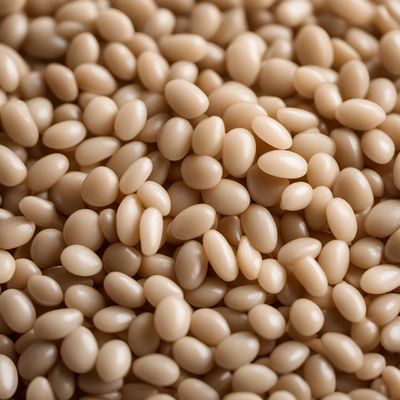
Ingredient
Runner beans (dry)
The Versatile Legume: Exploring the World of Dry Runner Beans
Dry runner beans, also known as Phaseolus coccineus, are large, flat, and kidney-shaped legumes that come in a variety of colors, including white, red, and speckled. They have a firm texture and a mild, nutty flavor. When cooked, they retain their shape and absorb flavors well, making them ideal for soups, stews, salads, and side dishes. Their appearance adds visual appeal to any dish, and their creamy texture complements a wide range of ingredients.
Origins and history
Runner beans are native to Central and South America and have been cultivated for thousands of years. They were introduced to Europe in the 16th century and quickly gained popularity due to their versatility and nutritional value. Today, they are widely grown in many countries around the world, including the United States, Mexico, Kenya, and India.
Nutritional information
Dry runner beans are a nutritional powerhouse, rich in protein, dietary fiber, folate, iron, and potassium. They are low in fat and cholesterol and provide essential vitamins and minerals, making them a healthy addition to any diet.
Allergens
Dry runner beans are not commonly associated with allergens, but individuals with legume allergies should exercise caution.
How to select
When selecting dry runner beans, look for beans that are uniform in size, free from cracks or blemishes, and have a vibrant color. Avoid beans that appear shriveled or discolored, as they may be old or of lower quality.
Storage recommendations
Store dry runner beans in an airtight container in a cool, dry place, away from direct sunlight. They can be stored for up to a year without losing their quality.
How to produce
Amateur gardeners can grow dry runner beans by planting seeds in well-drained soil in a sunny location. Provide support for the vines to climb, and ensure regular watering. Harvest the beans when the pods are dry and brittle.
Preparation tips
Before cooking dry runner beans, they should be soaked overnight to soften them and reduce cooking time. Rinse the beans thoroughly and discard any discolored or damaged ones. To cook, simmer the beans in water or broth until tender, which usually takes about 1 to 2 hours. Adding a pinch of baking soda to the cooking water can help soften the beans further. For added flavor, cook the beans with aromatics such as onions, garlic, or herbs.
Substitutions
Dry kidney beans or pinto beans can be used as substitutes for dry runner beans in most recipes.
Culinary uses
Dry runner beans are commonly used in soups, stews, and casseroles. They can also be mashed and used as a filling for burritos or added to salads for a protein boost. In Mexican cuisine, they are often used in dishes like refried beans or as a filling for tamales.
Availability
Dry runner beans are commonly available in North America, Europe, and parts of Africa and Asia.
More ingredients from this category » Browse all

Yardlong beans (dry)
The Nutrient-Packed Legume: Yardlong Beans

Borlotti or other common beans (dry)
The Versatile Dried Beans

Mung beans (dry)
The Mighty Green Legume

Soyabeans for consumption (dry)
The Versatile Legume

Lablab beans (dry)
The Versatile Legume: Lablab Beans

Broad beans (dry)
Hearty and Nutritious: The Dried Legume Powerhouse

Guar beans (dry)
Versatile Legumes: Guar Beans

Monantha vetches (dry)
The Versatile Monantha Vetches

Ervils (dry)
The Nutritional Powerhouse: Exploring the Versatility of Dry Ervils

Rice beans (dry)
The Versatile Powerhouse: Rice Beans

Jack beans (dry)
The Versatile Legume: Unveiling the Wonders of Jack Beans

Black eyed peas (dry)
The Lucky Legume